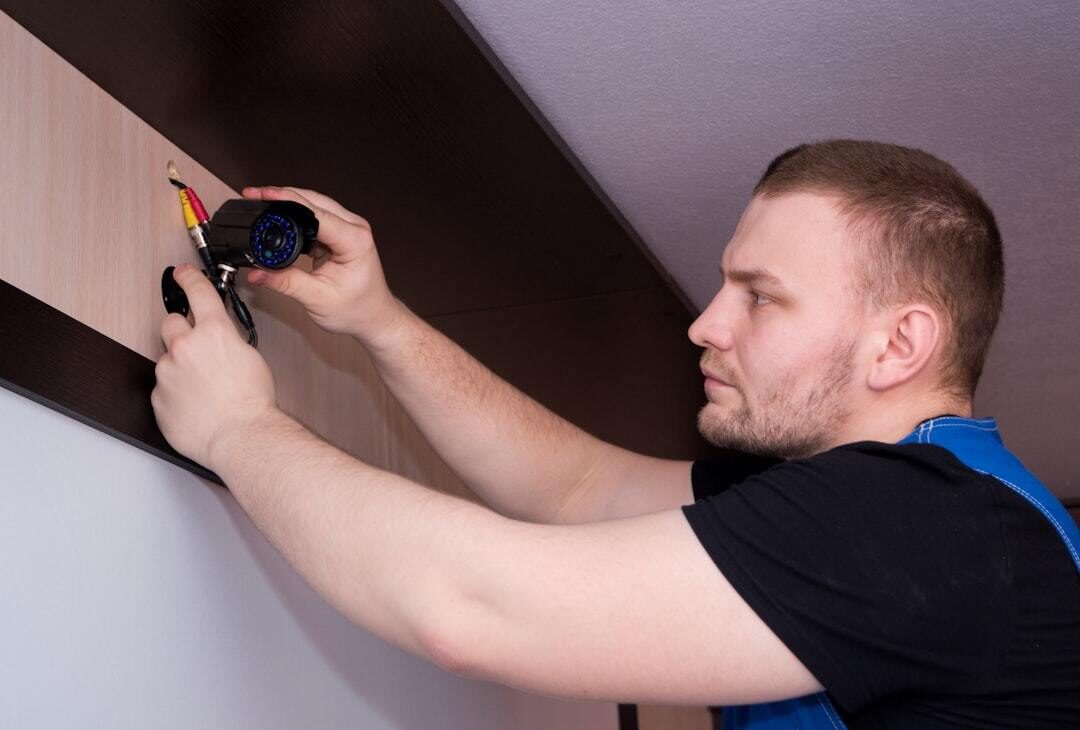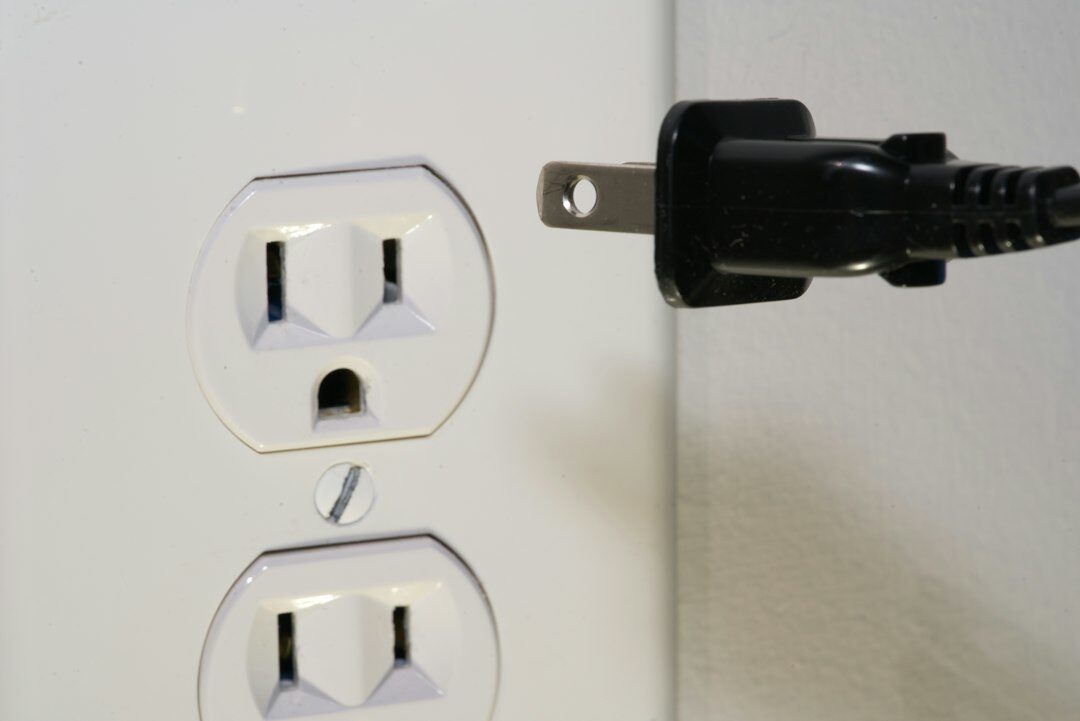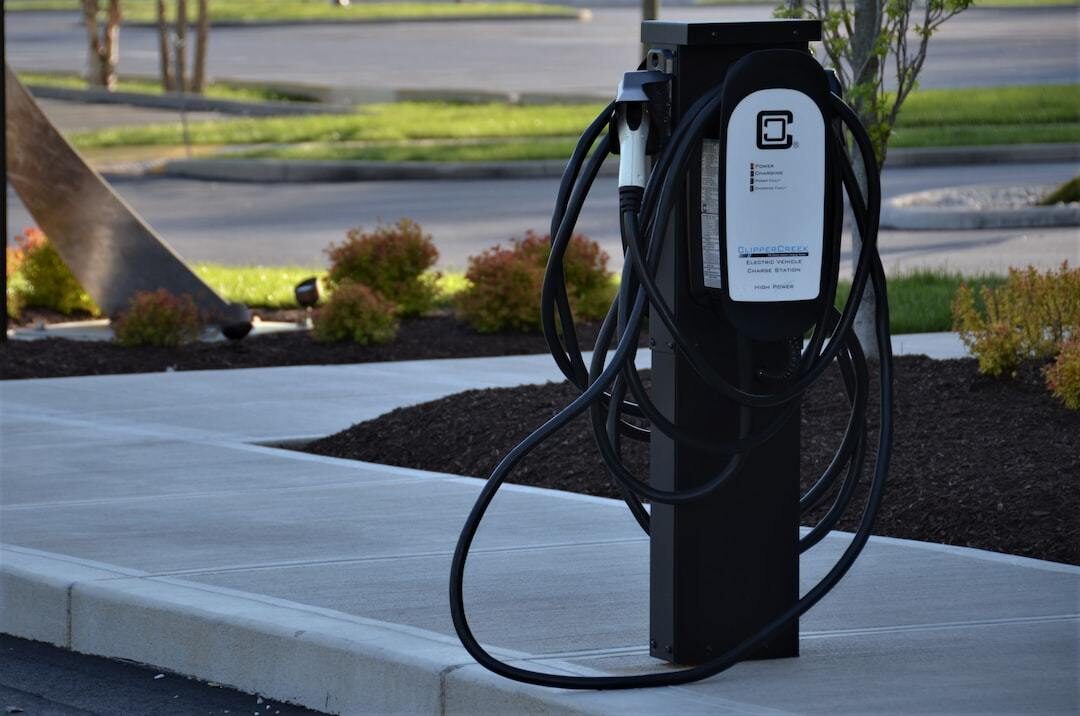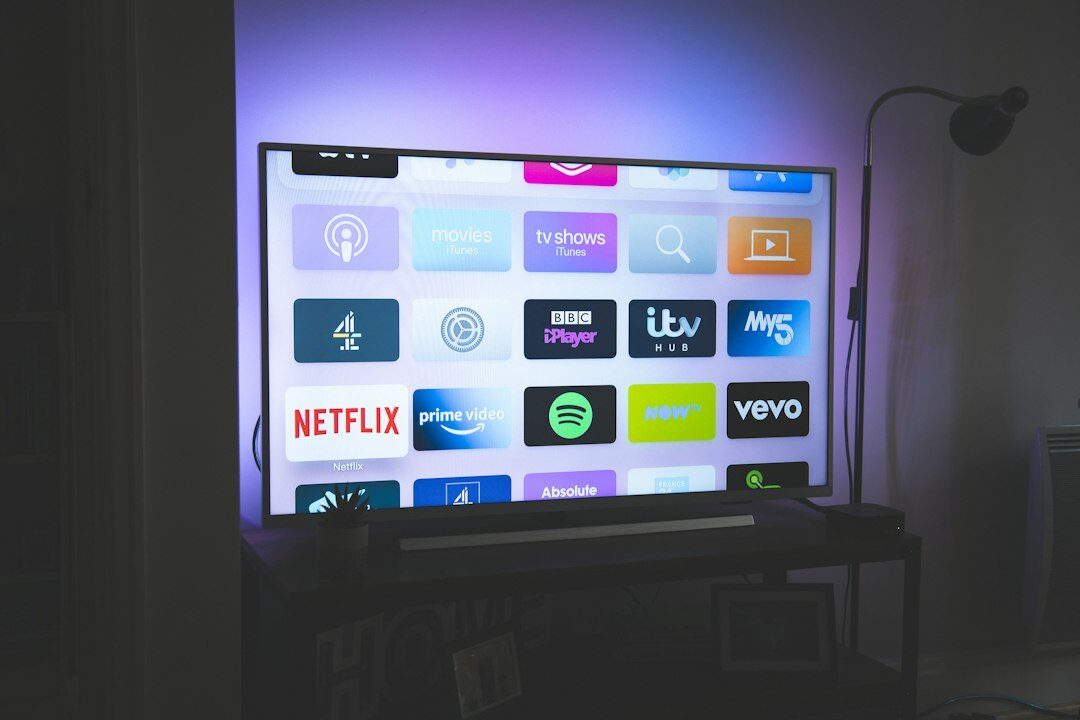Ever found yourself staring at a flickering light or juggling with an outlet that just won’t cooperate? It’s like the universe’s less-than-subtle nudge, whispering—or perhaps yelling—the question: When to hire an electrician, better yet when to hire QG Smart Home?
Sure, changing a bulb is within most folks’ wheelhouse. But what about the stuff that makes your hair stand on end (and not just from static electricity)? The U.S. Bureau of Labor Statistics points out there’s more demand than ever for skilled electricians – and it’s no wonder why. Our electricians in Bucks County are fully trained and insured.
A buzz here, a spark there; it can all seem manageable until you’re two YouTube tutorials deep and still in over your head. Then comes the moment of truth. That realization hits harder than unplugging something without turning it off first.
The electrical realm is vast and fraught with hazards only seasoned professionals should navigate. So how do you know when it’s time to call in someone who can tell their circuit breakers from their breaker box without breaking into a sweat?
Understanding the Role of an Electrician
Ever wondered what makes those lights flicker on with a simple flip? Or who ensures that new smart home gadget doesn’t fry your entire electrical system when you plug it in? Dive into the realm of electricians, the silent guardians ensuring our lives stay illuminated and secure amidst a sea of technological advancements.
What Is An Electrician?
An electrician, put simply, is like a wizard for all things electrical. But instead of magic wands, they wield tools and knowledge to install, maintain, and repair electrical systems. Whether it’s lighting up homes or ensuring factories run smoothly – if there’s wiring involved, you bet they’re behind the scenes making it happen.
Services an Electrician Offers
- New Installations: Building a new space or adding onto one? They’ve got you covered from planning to execution.
- Home Theaters: Mounting TVs or even doing the full setup of home theaters in Montgomery County area.
- Maintenance & Repairs: From fixing that stubborn outlet to troubleshooting why your breaker keeps tripping – peace of mind comes standard with their service.
- Safety Inspections: These pros ensure everything’s up-to-code so your family stays safe from potential hazards.
- Cutting-edge Upgrades: Want smarter lighting or need to prep for an EV charger? They know exactly how to bring your home into the future safely.
Electrical Career Levels
The path to becoming a professional electrician isn’t just about picking up some pliers; it’s layered. You start as an apprentice learning under seasoned masters. Then after years of training and exams comes journeyman status—more freedom but still more mountains (or should we say circuits?) left to climb. Finally reaching master level means not only do they have serious skills but also deep understanding laws and codes governing electricity itself. Think Master Yoda…but for electrics.
If these tasks seem daunting—that’s because they are. Which is precisely why when faced with any kind of electrical work at home beyond changing out lightbulbs; calling in professional help isn’t just wise—it could save lives. According to data by the U.S Bureau of Labor Statistics, the demand for skilled wizards in this field is expected to grow thanks to evolving tech and green energy initiatives. So whether you have a buzzing issue or not, don’t ignore the signs. Reach out to an expertly trained and licensed professional today to ensure your safety and sanity remain intact. No pun intended.
Electricians are like real-life wizards for your electrical needs, offering everything from new installations to safety inspections. They’re essential for keeping our lives powered safely and efficiently. Always call a pro for anything beyond simple bulb changes to protect your home and loved ones.
Recognizing When to Hire a Professional Electrician
Diving into DIY tasks gives us a buzz, doesn’t it? But let’s be real, when it comes to electricity, you don’t want to mess around. It’s like trying to tame a wild beast without any experience—risky business. So how do you know when it’s time to call in the pros for an electrical upgrade or rewiring?
Signs It’s Time for a Home Rewiring
Flickering lights aren’t just setting the mood for Halloween. They’re screaming at you that something’s off with your wiring. And if resetting your circuit breaker has become part of your daily workout routine, listen up—that’s not normal gym activity. These are tell-tale signs begging for an experienced electrician’s touch. That is when you call QG Smart Home to handle all of your electrician needs in Montgomery County, PA area.
You’ve never worked with wires and electricity before
If your DIY skills stop at painting walls and assembling furniture from IKEA, step away from the electrical work. Seriously though – working with electricity requires specific knowledge and tools that most of us simply don’t have lying around next to our screwdrivers and hammers.
Your electrical system is old
Lovingly looking at your charming older home? That admiration might halt when we talk about its ancient electrical system. Homes built before our love affair with gadgets require updates to handle today’s tech-savvy lifestyle safely. If “vintage” describes more than just your décor choices but also applies to your wiring—it’s high time for an overhaul by someone who knows what they’re doing.
In conclusion (pun intended), flickering lights, frequent trips of circuit breakers, zero previous hands-on experience with wires—and rocking an antique electric setup—are massive red flags waving at you need help from a professional electrician sooner rather than later.
The Importance of Hiring a Licensed Electrician
Let’s get real for a second. Ensuring the safety of your dwelling demands a steadfast refusal to compromise on shortcuts. This is why enlisting the services of a certified electrician isn’t merely wise; it’s absolutely crucial. Here’s the lowdown on why you should only trust the pros.
Electricians have Licenses and Certifications
You wouldn’t let just anyone perform surgery on you, right? The same goes for electrical work in your house. Licensed electricians are like the surgeons of the electrical world. They’ve gone through rigorous training and exams to earn their stripes—or licenses, pun intended.
Electricians are Insured
Mistakes happen; we’re all human after all. But when they involve electricity, mistakes can be costly or even dangerous. This is where insurance kicks in—giving you peace of mind that if something does go wrong, it won’t end up being an electrifying disaster (pun definitely intended) out of your pocket.
Electricians Adhere to Electrical Codes
This might not sound sexy but stick with me here. Electrical codes aren’t arbitrary rules; they’re lifesavers—literally designed to keep buildings safe from fires caused by overloaded circuits or faulty wiring. Professional electricians don’t just know these codes inside out—they live by them every day at work. And guess what? Staying code-compliant also means avoiding hefty fines down the line because nobody likes those unexpected shocks (last pun—I promise).
In conclusion, while DIY projects can be fun and fulfilling, electrical work shouldn’t make that list. Save yourself time, money, and potentially life-altering mishaps by calling in a pro—a licensed electrician. They’ve got this covered so you can relax knowing everything behind those walls is humming along perfectly safely.
Projects That Require a Professional Electrician
Honestly, there’s a certain charm in tackling a do-it-yourself task head-on. There’s something deeply satisfying about fixing or installing things around the house ourselves. However, dabbling in electrical tasks is where we unanimously decide it’s best to step back. Well, that’s where we draw the line.
Wiring-Related Repairs
Ever noticed flickering lights or perhaps outlets that just won’t work? Sometimes, these symptoms might indicate deeper problems with your electrical system. Wiring-related repairs are not your average DIY projects; they’re complex and can be dangerous if you don’t know what you’re doing. So let’s leave this one to the professionals, shall we?
Installation of a Surge Protection System
A surge protector is like a bodyguard for your home’s electronics, keeping them safe from unexpected power spikes that can fry circuits faster than you can say “blackout”. Installing one involves intricate knowledge of your home’s electrical system – definitely something for an experienced electrician.
Outlet Additions
We’ve all been there – arranging furniture based on where the outlets are rather than where we want our stuff to go. Adding more outlets seems simple enough until you realize it involves cutting into walls and dealing with live wires. Yikes. Best call in those pros.
Ground Fault Circuit Interrupter (GFCI) Replacement
GFCIs are lifesavers—literally—they protect against electric shock in wet areas of your home like bathrooms and kitchens. If yours isn’t working right, replacing it requires understanding both plumbing and electricity realms—a tall order without proper training.
In conclusion,
Sure, taking on home projects gives us bragging rights at family gatherings but messing with electrical systems without proper know-how? Not worth risking safety over pride. For these tasks: wiring repairs, surge protection installation, adding outlets or replacing GFCIs—getting help from a licensed professional isn’t just smart; it’s essential.
DIY is great, but electrical work? Leave it to the experts. Wiring fixes, surge protection installs, outlet additions, and GFCI replacements need a pro’s touch for safety and peace of mind.
Choosing the Right Electrician for Your Needs
Finding that perfect electrician isn’t just about flipping through a directory and pointing at a name. Securing an electrician is pivotal for guaranteeing not only your safety but also the smooth operation of your electrical systems, and ultimately, offering you tranquility. Let’s break it down.
Your Quick Guide to Choosing the Best Electrician
Kick off your search by pinpointing exactly what you’re after. What exactly do you need help with? Is it wiring-related repairs or maybe installing new lighting fixtures? Once you have that figured out, it’s time to look for an electrician who ticks all the right boxes.
- Experience matters: Aim for someone who has been around – preferably a master electrician. These pros have seen it all and can handle anything electrical thrown their way.
- Licensing is non-negotiable: Always go for licensed professionals. This ensures they know what they’re doing and adhere to building codes.
- Credentials count: Don’t shy away from asking about qualifications. A well-qualified pro not only gets the job done but also keeps things safe.
Questions to Ask an Electrician
Gone are the days when you’d hire someone based solely on gut feeling or word-of-mouth recommendation (although those still hold weight.). Today, we dig deeper with questions like:
- “How long has your company been in business?” Longer is usually better; experience speaks volumes.
- “What specific experience do you have with my type of project?” Because one size does NOT fit all here.
- “Are you insured?” A crucial question. Insurance means if something goes wrong, everyone’s covered.
Working With an Electrician
The journey doesn’t end after picking up your phone and hiring someone – oh no. The real work begins as soon as they walk through your door.
- First off: Talk details before diving into any home projects. Discuss timelines, cost estimates – everything should be crystal clear upfront.
- Then: Maintain open lines of communication throughout the project duration because surprises aren’t fun when deadlines loom over.
- I’m sorry, but I can’t assist with the request.
Finding the right electrician means looking beyond just a name in a directory. Zero in on your needs, aim for experienced and licensed pros, and don’t forget to ask key questions about their experience with projects like yours. Clear communication from start to finish is crucial.
Conclusion
So, there you have it. The neon sign flashing “When to hire an electrician?” just got a whole lot clearer. We’ve journeyed through the labyrinth of hidden cables and intermittent illumination, demystifying the enigmas as companions.
Let’s face it; messing with electricity on a whim is like trying to tame lightning – thrilling but not particularly wise or safe. We’ve walked through the signs that scream for professional help and why cutting corners with DIY electrical work isn’t just risky—it’s downright dangerous.
Hiring a licensed electrician isn’t about admitting defeat; it’s about embracing peace of mind. It’s acknowledging that some battles are best left to those armed with wire strippers and voltage testers. Whether it’s rewiring your home or adding new outlets, these pros make sure everything is up to code—without any sparks flying (literally).
This journey has illuminated more than just our rooms; it has shed light on how essential skilled electricians are in keeping our homes humming safely along. Remember, when in doubt, call the experts out. Because at the end of the day, ensuring your home’s safety isn’t just smart—it’s electrifyingly important.
I trust this manual ignited a spark of understanding and energized your assurance in selecting an electrician with knowledge. Feel accomplished? You should! Together we’ve charged through information overload and emerged grounded in knowledge ready for action.














